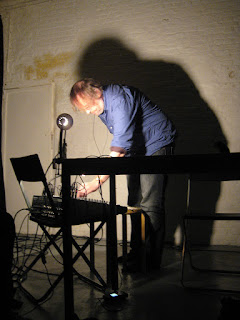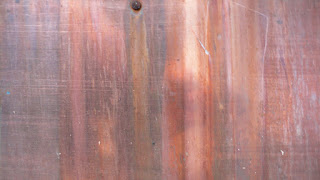Jez releases a lot of CDs, many by other musicians, but also a good few by himself. I still haven’t had the time to catch up with his album released by the Compost and Height netlabel yet. Its here if you would like to sample some of his music in lossless format for free. I have come to think of Jez as something of a hunter/gatherer of field recordings, (though I’m not entirely sure that the description field recording these days really describes suitably what he and other like him actually do). Jez then releases albums of material that seem a bit like documentation of his explorations, audio photo albums maybe, an apt metaphor given Jez’ considerable skills as a photographer....
....they seem to work as little catalogues of recordings that can present some fascinating sounds, discovered in places we might not expect....little moments of aural revelation....
So Four Objects contains four recordings, each exactly ten minutes in length. As you might expect, the four tracks are focussed on recordings of four objects- a piezo disc microphone slowly breaking, a teasel plant found on the Norfolk coast, a slate window sill in Brussells and a hot drinks flask in the same city, which apparently started making the sounds heard here ten minute sand twenty-eight seconds after being filled with hot water.
The first, the sounds of the piezo disc’s last moments consists of a stream of tiny, tinkling, crackling pops and clicks, about as we might expect. What makes the recording nice is the absence of anything else, so the tiny sounds as they flit past sit against a backdrop of white. Apparently the disc was moved slightly to create these little crackles, and so there is some human input into the generation of the sounds. This piece then, sets the mood for the album in general- nice sounds, found by an attentive ear, captured and presented well....
The second track, the recording of the teasel plant reminds me a lot of the extensive listening I have done int he past to Jeph Jerman’s field recordings of cactii. The plant has a brittle, almost hollow sound to it, so the recording we hear has a strong percussive feel. The wind blows the plant, which makes it knock into itself, so creating this contact mic'ed recording. Again, its a nice capture.
The third piece, the recording of the window sill is another contact mic piece, but here the sounds of vibrations on the slate surface take on a strange, alien quality, almost (for some reason) like standing in a long concrete tunnel listening to the sound of dense church bells ringing at the far end of it. Again, it takes a knowledgeable and creative ear to discover this kind of thing, and Jez is remarkably good at finding hidden beauty in unexpected places, a theme that runs through much of his work, audio and visual.
The hot drinks flask is an intriguing one. The statement that the sounds we hear, a sudden explosion of escaping air, occurred at 10′28″ after the flask was filled suggests that this was no accident, and the careful placement of microphones to capture this phenomena also suggests that Jez was expecting this to happen, perhaps having come across it by accident before. What we hear then is an initial rush of sound that slowly breaks up into little stuttering jabs of sound, not at all unlike the sound of raw open circuit electronics we often hear in modern improvisation. I’d never have guessed that a flask was creating the sound, so again the element of revealing hidden treasure is the track’s strong point....
So Four Objects is not at all without its merits....it certainly showcases the remarkable ability of Jez riley French to discover and then reveal to the rest of us a soundworld beyond what we normally perceive.....Four Objects then is a collection of nice, creative recordings....















































